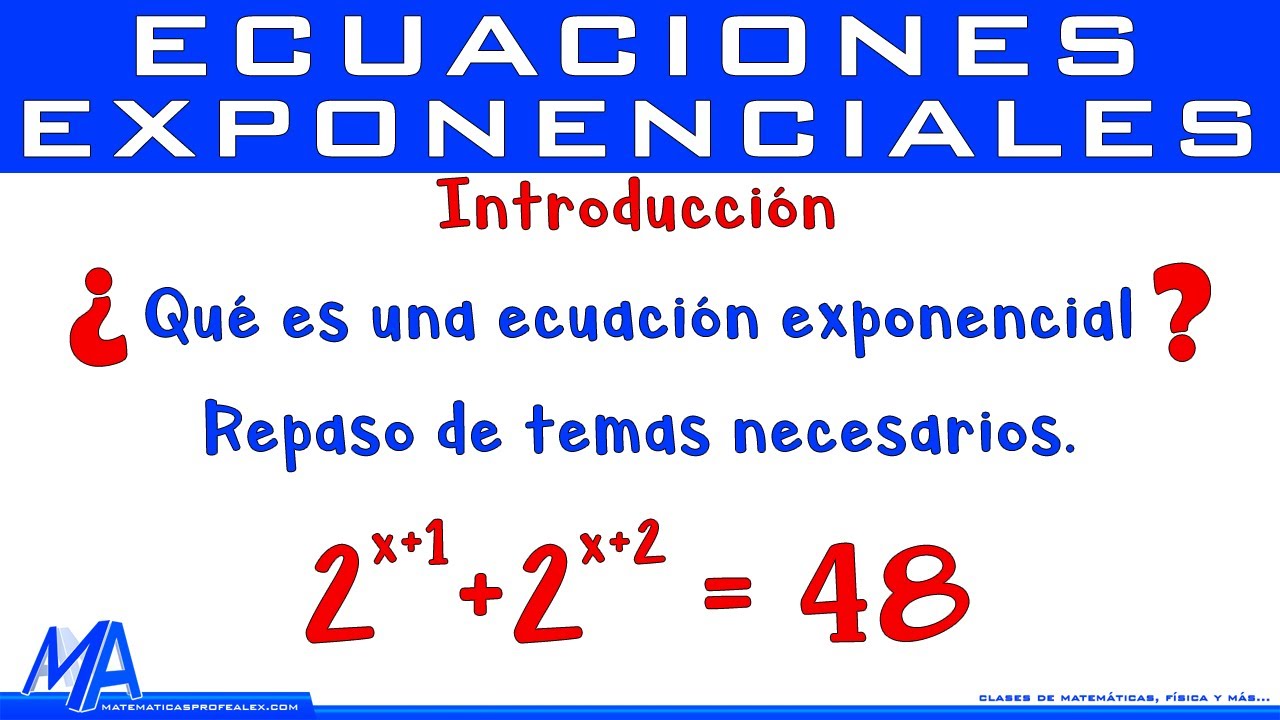Eksponen • Part 1: Definisi, Operasi, dan Sifat Eksponen / Pangkat
Summary
TLDRIn this video, viewers are introduced to the topic of exponents or powers, with a focus on the definition and properties of exponents. The content explores the basic concept of repeated multiplication, moving into more complex exponent operations and equations. The video also covers topics like negative exponents, fractional exponents, and zero exponents. Additionally, it provides examples and formulas for multiplying, dividing, and raising powers, and includes practical tips like memorizing exponent tables for quicker problem-solving. By the end, viewers gain a deeper understanding of exponents, which are crucial for higher-grade math topics.
Takeaways
- 😀 Exponents are a form of repeated multiplication, where the base number is multiplied by itself multiple times, as indicated by the exponent.
- 😀 In grade 10, the study of exponents goes deeper than what was learned in junior high, involving more complex problems and additional topics like exponent equations and inequalities.
- 😀 The base number is the number being raised to the power, and the exponent (or power) tells how many times the base is multiplied by itself.
- 😀 The formula for multiplying exponents with the same base is a^m * a^n = a^(m + n), where the exponents are added together.
- 😀 When dividing exponents with the same base, the formula is a^m / a^n = a^(m - n), meaning the exponent of the denominator is subtracted from the numerator.
- 😀 Raising a power to another power involves multiplying the exponents: (a^m)^n = a^(m * n). This can be used to simplify complex exponent expressions.
- 😀 Exponents apply to both multiplication and division, allowing us to break down expressions into simpler components by splitting and rearranging the base factors.
- 😀 Negative exponents indicate the reciprocal of the base raised to the positive exponent, for example, a^(-n) = 1 / a^n.
- 😀 Fractional exponents are equivalent to roots, such as a^(1/2) being the square root of a, and a^(1/3) being the cube root of a.
- 😀 A number raised to the power of zero equals one, as long as the base is not zero, meaning a^0 = 1 (where a ≠ 0).
- 😀 Understanding the properties of exponents and practicing with small powers and prime numbers like 2, 3, 5, and 7 can significantly speed up solving exponent-related problems.
Q & A
What is the definition of exponents or powers?
-Exponents or powers represent repeated multiplication of the base number. For example, 2^3 means multiplying 2 by itself three times: 2 * 2 * 2.
How are negative exponents handled?
-A negative exponent indicates the reciprocal of the base raised to the positive exponent. For example, 2^(-3) is the same as 1 / 2^3, which equals 1/8.
What happens when an exponent is zero?
-Any non-zero number raised to the power of zero equals 1. For example, 5^0 = 1 and 10^0 = 1.
What is the rule for multiplying powers with the same base?
-When multiplying powers with the same base, add the exponents. For example, 2^3 * 2^4 equals 2^(3+4) = 2^7.
How do you divide powers with the same base?
-When dividing powers with the same base, subtract the exponents. For example, 2^5 / 2^2 equals 2^(5-2) = 2^3.
What does it mean when a power is raised to another power?
-When a power is raised to another power, multiply the exponents. For example, (2^2)^3 equals 2^(2*3) = 2^6.
How is a power of a product expressed?
-The power of a product can be distributed to each factor in the product. For example, (2 * 3)^3 equals 2^3 * 3^3.
What is the rule for handling fractional exponents?
-Fractional exponents represent roots. For example, a^(1/2) is the square root of a, and a^(1/3) is the cube root of a.
What is the relationship between powers of prime numbers?
-The powers of prime numbers can be calculated by multiplying the prime number by itself multiple times. For example, 2^3 = 8, 3^2 = 9, and so on.
Why is it useful to remember a table of powers of prime numbers?
-Remembering the table of powers of prime numbers helps speed up solving exponential functions, equations, and inequalities in exams or problems. For example, knowing that 2^10 = 1024 can save time in calculations.
Outlines

This section is available to paid users only. Please upgrade to access this part.
Upgrade NowMindmap

This section is available to paid users only. Please upgrade to access this part.
Upgrade NowKeywords

This section is available to paid users only. Please upgrade to access this part.
Upgrade NowHighlights

This section is available to paid users only. Please upgrade to access this part.
Upgrade NowTranscripts

This section is available to paid users only. Please upgrade to access this part.
Upgrade NowBrowse More Related Video

BILANGAN BERPANGKAT (EKSPONEN) DAN SIFAT-SIFATNYA | PANGKAT BULAT POSITIF

Eksponen (1) | Sifat-sifat Eksponen | Bentuk Pangkat

Eksponen Kelas 10 Kurikulum Merdeka

SIAP UJIAN SIAP SEMESTER, belajar bersama pak guru Arya Belajar online - materi eksponen

Ecuaciones exponenciales | Introducción

[Materi] Bilangan Berpangkat Bulat Positif
5.0 / 5 (0 votes)